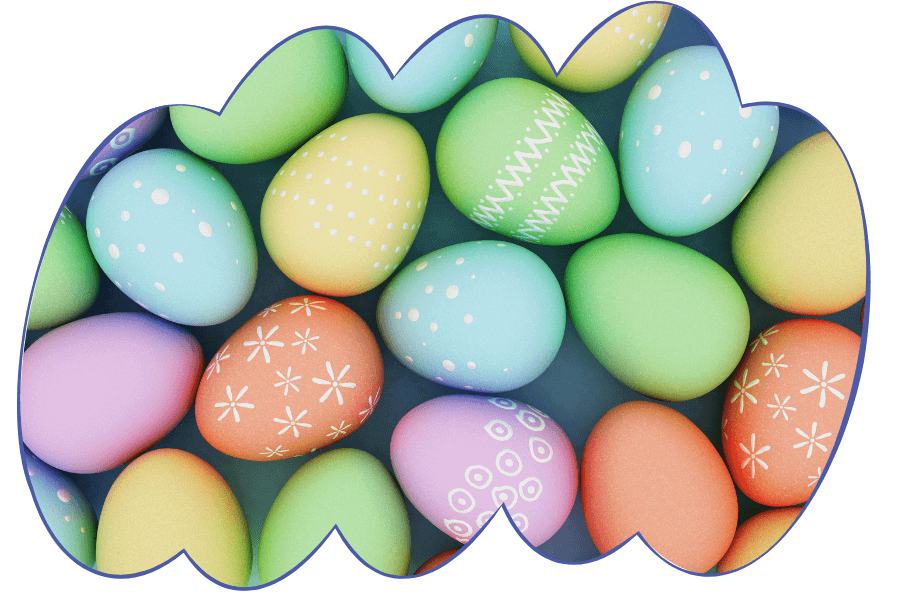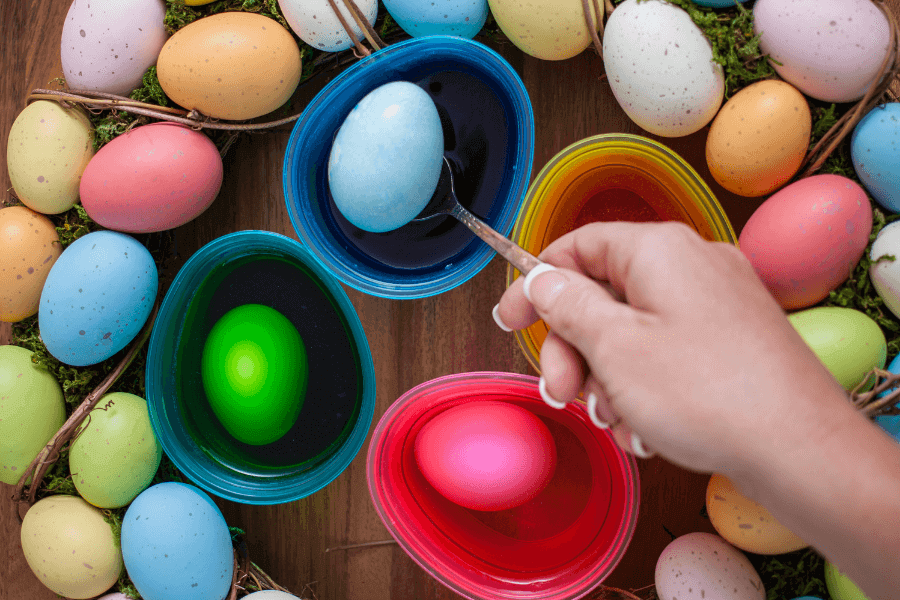Finally, the ultimate guide to dyeing Easter eggs. Here are tons of ideas to get you inspired this month to dye Easter eggs with your kids.
Learn how to dye Easter eggs, including decorating ideas and different ways to color eggs, while keeping it simple and fun for your family.
first, we need the eggs; if this is your first time doing it, you might not know what type to use. At least I didn’t until I learned there’s one step to do before we start coloring the eggs. You need hard-boil eggs.
How to Boil Eggs for Easter

Start with room-temperature eggs before you boil them as this will prevent cracking.
- Bring water to a boil first
- Add eggs to the water with a spoon
- Start the timer for 10 minutes for hard-boiled. This means the yellow part of the egg is hard.
- Let them cool and they are ready for coloring!
Color Eggs for Easter using Shaving Cream

- Add shaving cream to a muffin tin.
- Add a few drops of food coloring and swirl the color around with a popsicle stick
- Add egg and move the egg around with tongs to cover the whole egg
- Place the egg on a tray to dry when dry, remove the excess shaving cream, and the color stain will remain in the egg
Color Eggs for Easter using VINEGAR
- Add baking soda to a muffin tin
- add a spoonful of water to each section.
- Add a few drops of food coloring and swirl the color around with a popsicle stick.
- Add egg and move the egg around with tongs to cover the whole egg
- Add a spoonful of vinegar to create a chemical reaction and the color to get attached to the egg
- Move the egg around with togs to cover the whole egg.
- Place the egg on a tray to dry when dry, pat dry and the color stain will remain in the egg
Taste-Safe Color Eggs for Easter using cool-whip
We will use the same technique as the shaving cream method.
For those toddlers still putting things in their mouth, it is best to use an edible-safe option like this one.
- Add cool-whip cream to a muffin tin.
- Add a few drops of food coloring and swirl the color around with a popsicle stick.
- Add egg and move the egg around with tongs to cover the whole egg
- Place the egg on a tray to dry when dry, remove the excess cool-whip, and the color stain will remain in the egg
How to color easter eggs Naturally
Not everyone is a fan of using food dyes for their sensory activities, and for this reason nature is here to save us with some natural options to use.
Using natural food dye will create pastel colors as they are softer in nature. They will also need extra time to color the egg so patience is key!
To make each color you need to mix hot water with white vinegar to help the colors stick to the shells.
Natural Food dyes Color guide for easter eggs
- Light blue: fresh blueberries + vinegar
- Pink: peeled and grated beet + vinegar
- Yellow: ground turmeric + vinegar
- Orange: yellow onion skins + vinegar
- Blue: chopped red cabbage + vinegar
- Green: chopped red cabbage + baking soda
Make Tie-Dye easter eggs with food color
This was the first type of food dye activity I did. I liked it because it was simple, it only required supplies I already had at home and my son was not trying to eat it. Yep! he was still putting things in his mouth. So attention span and simplicity needed to be top priority.
Go to slide 2 for video
